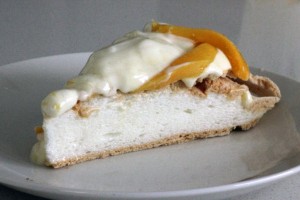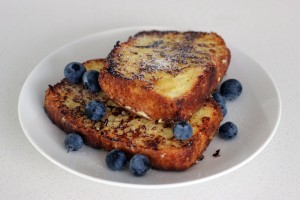
After a few visits to department stores and consultation with a number of websites, I’ve realised there’s not much I can do about my ice cream making equipment.
All of the machines out there are pretty similar to what I already have (i.e. removable bowl that you freeze in advance then place into machine to churn), and the only real option is to upgrade to a full ice cream machine unit with a built-in freezer.
Did I say “real option”? Actually, there’s no chance I’m investing $400 into a machine that will only be brought out every couple of months – I made that mistake with my deep fat fryer that has been used once!
So, I’ve had to adapt to making ice cream in 30C+ weather which is what I’m in for over the next few months.
One tip I learned this week was making sure everything was as cold as possible before placing into the churner. Sounds really basic, but made a huge difference – I was adding room temperature liquid into a frozen bowl so automatically the bowl started defrosting.
Second, I placed the bowl back into the freezer for intervals of 30 minutes or so before churning again.
This managed to stop the ice crystal formation but also give the ice cream a chance to set.
Lastly, on the advice of a helpful shot assistant I blasted the air conditioning while I was making the ice cream to cool the room as much as humanly possible.
So after my so-so effort with vanilla ice cream, I wanted to give chocolate a try.
I know this is all very boring and basic to people who make ice cream regularly, but I’ve always believed that you have to master the basics before going off and getting creative. I guess that’s the whole purpose of this blog and this is all very new to me!
For a second time in a row, I used Michel Roux’s recipe but adding my own extra steps in lieu of a proper ice cream maker.
It worked out really well and managed to give me a properly formed and set scoop. It didn’t need any accompaniment and was still delicious a couple of days later. (although I don’t think I would have left it much longer)
I swear, I know this process takes time but I am yet to find a vanilla or chocolate ice cream that tastes as good as these. While the texture of my vanilla wasn’t perfect, the flavour was insane! And this chocolate ice cream delivered on both fronts.
So next week is going to be moving on to sorberts, but I’ll definitely be practicing more ice creams behind the scenes and will share any worthy contenders with you.
Chocolate ice cream
150ml whole milk
150ml double cream
80g caster sugar
3 egg yolks
100g good quality dark chocolate
Pour the milk, cream and 50g sugar into a saucepan and bring to the boil over a medium heat.
Meanwhile, whisk together the eggs yolks and remaining sugar until pale.
Pour the milk mixture over the eggs, whisking the whole time.
Return the mix to the stove and cook over a low heat until it thickens.
Take off the heat and stir in the chocolate.
Cool over ice, then churn in the usual way. (this is where I would place the cooled ice cream in the fridge for half an hour or so).





